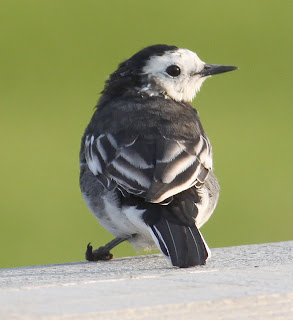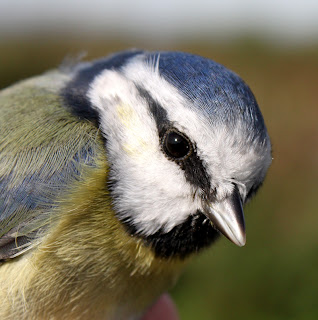Readers of Another Bird Blog will know of the intermittent mention of culinary things, bacon butties, fish and chips, even the occasional reference to curry. So dear reader, stay tuned for more gastronomic delights and even a history lesson sandwiched between today’s meagre bird news.
With rubbish forecasts for the next five days I headed into the face of today’s wind at Knott End determined to do a little birding, even though the tide at 0730 was only medium height and the wind too north westerly.
A mass of grey told me of Red Knot huddled together against the biting wind, and it was only when the tide turned that the Knot started to move around a little, before they went for a flying circuit and then settling again. I estimated 1700 of them, with 14 Redshank, 3 Turnstone, a few wind battered Curlew and 18 Shelduck. Out on the distant water I came up with 11 Eider, 4 Cormorant and 9 Red-breasted Merganser. The latter species always appear in the bay as if by magic after a blowy spell.


John James Audubon, in The Birds of America, began his description of the Knot this way: “The Knot, good reader, is a handsome and interesting species, whether in its spring or in its winter plumage, and provided it be young and fat, is always welcome to the palate of the connoisseur in dainties. As to its habits, however, during the breeding season, I am sorry to inform you that I know nothing at all, for in Labrador whither I went to examine them, I did not find a single individual.” The Knot’s nest went undiscovered to science until June, 1909, when Admiral Peary photographed one in the high arctic after his dash to the North Pole.
But Audubon was a man of his time, and even scientists studied wildlife for their “usefulness” to society - in the Knot’s case, as a delicacy. Its taste on a plate may even explain its name. One account of the Knot’s name has the Danish King Canute, or Knut, dining on a strange coastal bird. His compliments to his chef led his courtiers to dub the bird, Knuts, or Knots.
An alternative account of the origin of the Knot’s name also features King Canute. This one notes that the Knot often feeds in the water, even as the tide is coming in. Where the Sanderling chases the waves, running to and fro with the coming and going of the tide, the Knot seems to hold its ground, as though trying to hold back the tide itself. A legend associated with King Canute has the Danish monarch futilely attempting to hold back the tide, hence the association of the Knot and Knut.
I thought to take a look at Lane Ends again where in the last few days I’d seen lots of egrets in the plantation sheltering from the incessant winds. There were 12 today, huddled into a small area hidden from general view but where they could take a break from just ducking down in the salt marsh ditches as a way of avoiding the blustery weather.

I came across this information on good old Wiki – “The Little Egret was once present, and probably common, in Great Britain, but became extinct there through a combination of over-hunting in the late mediaeval period and climate change at the start of the Little Ice Age. The inclusion of 1,000 egrets (among numerous other birds) in the banquet to celebrate the enthronement of George Neville as Archbishop of York at Cawood Castle in 1465 indicates the presence of a sizable population in northern England at the time, and they are also listed in the coronation feast of King Henry VI in 1429”.
Little Egrets had disappeared by the mid-16th century when the court chef had to “send further south" for more egrets.

“Further declines occurred throughout Europe as the plumes of the Little Egret and other egrets were in demand for decorating hats. They had been used for this purpose since at least the 17th century but in the 19th century it became a major craze and the number of egret skins passing through dealers reached into the millions. Egret farms were set up where the birds could be plucked without being killed but most of the supply was obtained by hunting, which reduced the population of the species to dangerously low levels and stimulated the establishment of Britain's Royal Society for the Protection of Birds in 1889. By the 1950s, the Little Egret had become restricted to southern Europe, and conservation laws protecting the species were introduced. This allowed the population to rebound strongly; over the next few decades it became increasingly common in western France and later on the north coast. It bred in the Netherlands in 1979 with further breeding from the 1990s onward.
In Britain it was a rare vagrant from its 16th century disappearance until the late twentieth century, and did not breed. It recently became a regular breeding species and is now common, often in large numbers at favoured coastal sites. The first recent breeding record in England was on Brownsea Island in Dorset in 1996, and the species bred in Wales for the first time in 2002. The population increase has been rapid subsequently, with over 750 pairs breeding in nearly 70 colonies in 2008, and a post-breeding total of 4,540 birds in September 2008. In Ireland the species bred for the first time in 1997 at a site in County Cork and the population has also expanded rapidly since, breeding in most Irish counties by 2010. The population is now spreading through English and Welsh counties.”
I took another look, and the forecast is much the same, so stand by for more archive photos and other menu delicacies in the next day or two.


















































.JPG)






.jpg)











